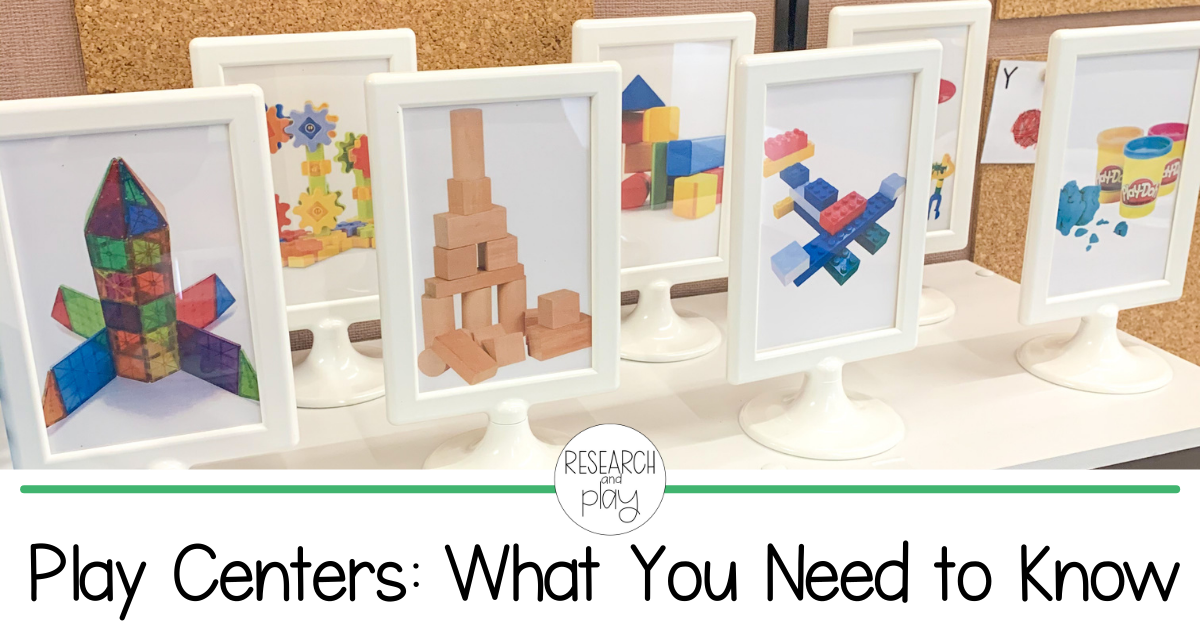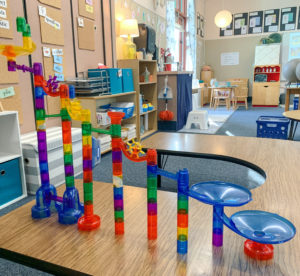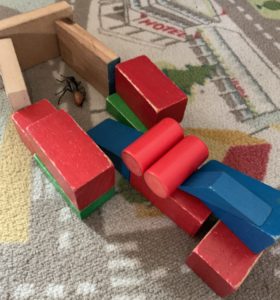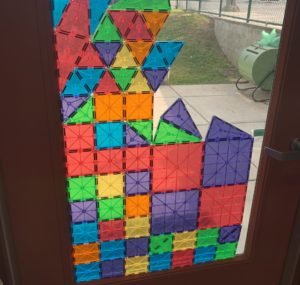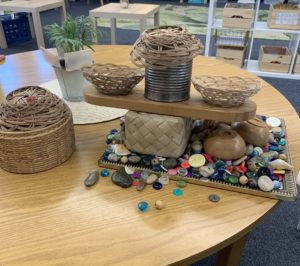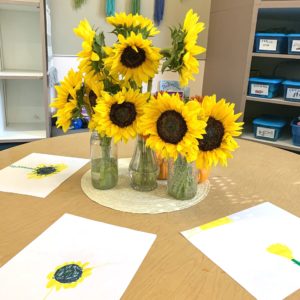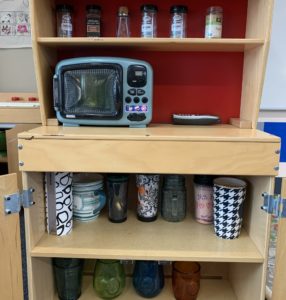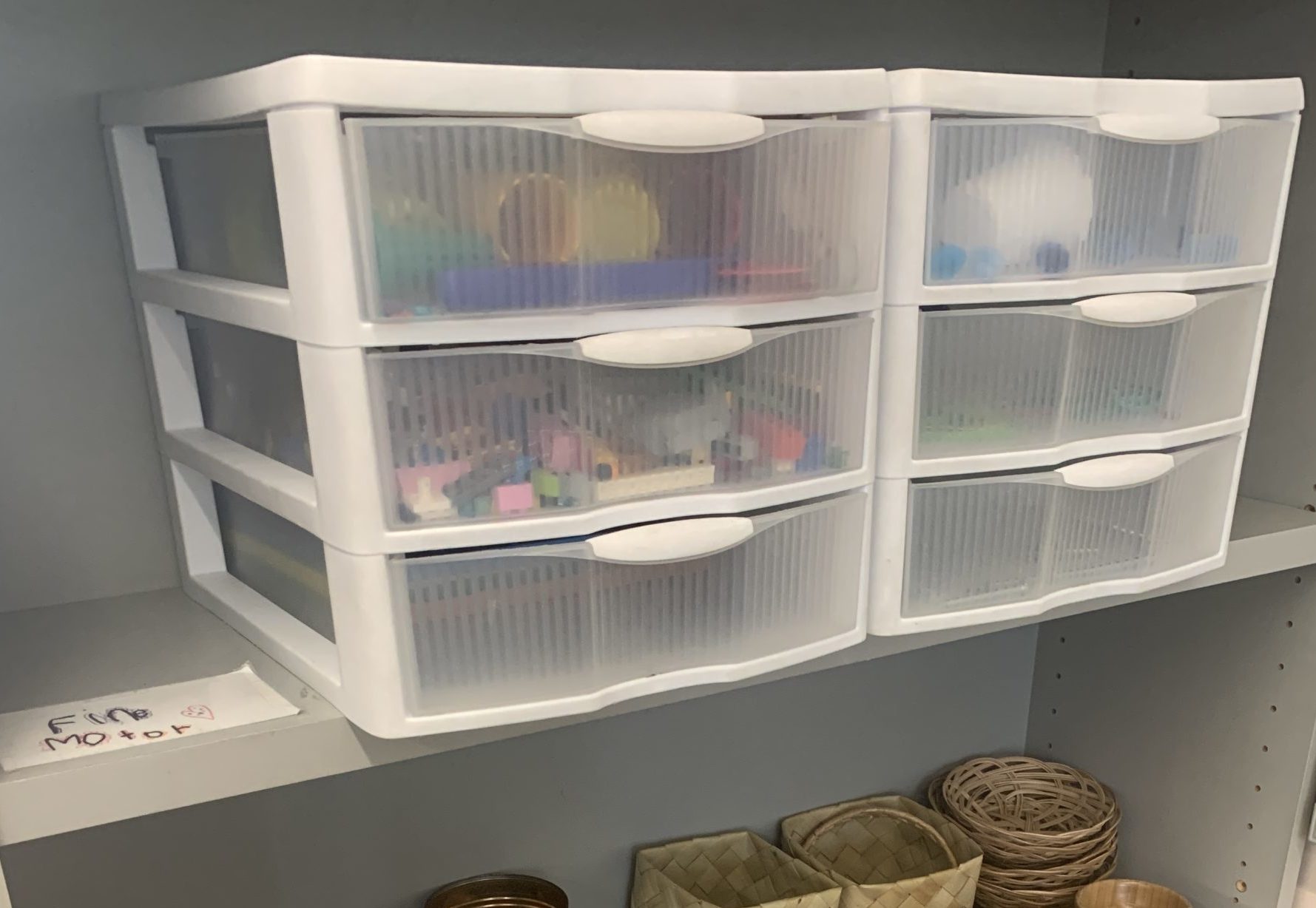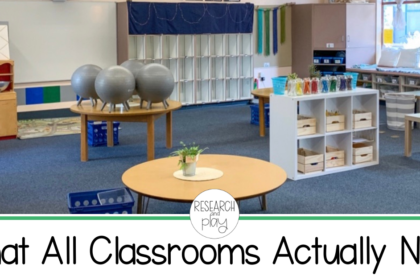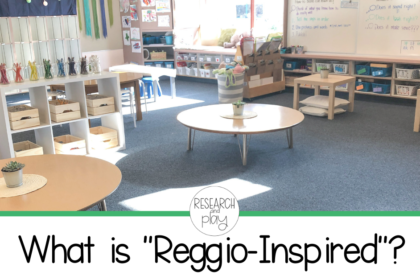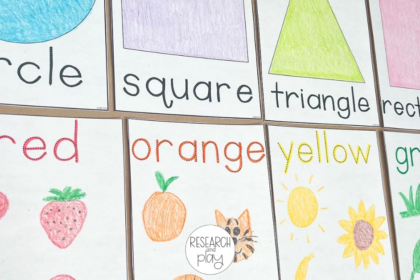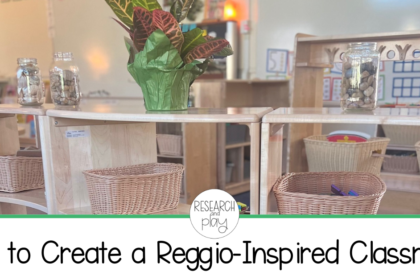One of the best parts of our day is when we get out play centers. I get so many questions about how we organize this time of our day, what types of materials we use, and what my students actually do at their centers. Let’s break down play centers so that you can see just how easy it is to manage!
But before we do, I want to share why play centers hold such a special place in my classroom. Play is such an important part of my pedagogy because of the benefits it offers for children. When playing, children are able to be creative, use their imagination, take risks, be the leader, create rules, learn from mistakes, take turns, be silly, and so much more. Play provides socialization practice and can incorporate math and language skills. While children play, adults can take a secondary role, ask questions, observe, or play alongside them. The benefits of play in a classroom setting are many. In a place where children are at times asked to be “right,” follow certain rules, and solve problems in a set way, playing at school can alleviate pressure and allow kids to feel free.
Materials We Use
Now that you know why we play, let’s talk about what we play with! This list is not exhaustive or definitive. There are a variety of toys, materials, and objects that you could bring into your play centers. I like to recommend that you start with whatever is easiest for you to access. You may be able to borrow blocks from a teacher who isn’t using them at the moment, or you could have some toys that your own children have outgrown.
My only rule is this: Make sure the toys or materials have an open-ended concept.
That means, the things you bring in for play centers should be able to be used in a variety of ways. The “toys” we use are not toys with one purpose. They can be built, changed, or manipulated in a variety of ways.
Breakdown of Centers
Some centers stay the same all year, the materials never change. Some, though, are changed on a regular basis. Here’s the breakdown:
Building Center
Magna Tiles, marble runs, and wooden blocks are materials available all year. I never change these because the possibilities are endless. Every time students come to this center, they either add to a previous creation or start something completely new!
Art Center
While the materials in this center never change, I do like to add new inspiration and provocations. The basic materials include: crayons, markers, pens, watercolors, tempera paint, paint pens, paper. Students can access those materials every time they go to this center. The table where they work is where I add new materials or provocations. In the photo above, you see sunflowers. Fresh flowers and things from nature are always interesting for students to paint or draw. I have also added pipe cleaners, ribbons, string, feathers, and glitter. Yes, glitter! You can add new art materials periodically to keep it engaging.
Dramatic Play
I’m fortunate to have a play kitchen in my current classroom, but this center would still be very fun without it! I have a play fridge, stove, sink, and cupboard with a play microwave. However, everything else can be used at a table or in another area of your classroom with shelving. I’ve bought a few things to keep in this center, but some are just recycled from my home! Here’s what I have either bought or brought in from home: pots and pans, utensils, plates and bowls, forks and spoons. For food, I bring in empty containers! When I finish milk, creamer, ice cream, spices, eggs, cereal, or other container foods, I wash them out if needed and bring them in. Kids love seeing “real life” things that they can pretend with!
Sensory Table
This center is fun to play in but does take a bit of planning and effort on the teacher’s part. I do not have an official water table, so I’ve made a makeshift one from an underbed storage tub sitting on an unused student desk. Inside, I’ll put dried pasta and beans, water (sometimes with soap or food coloring), sand, potting soil and seeds, or novelty items like water beads, moon dough, or cloud foam. Many of these things require more attention to make sure you are switching them out frequently so that they don’t get dirty or moldy (it’s gross but happens sometimes!). My rule of thumb is to keep things in there for one week max unless it’s dried pasta or sand.
Loose Parts and Fine Motor
One play inspiration from Reggio Emilia classrooms is the notion of loose parts. There are a few interpretations (this is one of my favorite books about it), but the gist is that students are able to use a variety of materials in creative ways. I give students stones, shells, buttons, beads, vase fillers, and gems along with a mirror, small baskets, bowls, and cans. As simple as it sounds, students have created tons of different things with these materials! Beads and a mirror have become a game board, buttons and stones have become self portraits, and shells and gems have become games. This center truly allows their imagination to run free.
Fine motor is a center that I like to include that has a variety of materials (shown below). I use these 3-drawer organizers and change the materials out periodically. Here are some things I include in our fine motor center: playdoh and tools, tweezers and pom poms, lacing cards or buttons, nuts and bolts, balancing sticks (Jenga), geoboards, and LEGOS.
Managing Centers: How, Who, When
Aside from the “what,” the “how” is equally as important. Giving students all of these fun materials would not be productive or manageable each day without clear expectations. I model each center using the guided discovery and interactive modeling approaches from Responsive Classroom. I highly recommend this book to help you get these centers, and other beginning of year routines, started successfully!
Part of modeling these centers is showing students where they can play. Some centers have a defined play area (dramatic play, sensory table, art), but others can be moved off of a shelf and around the room. I have used a variety of methods, but these plastic frames worked well (these are old from IKEA but here is another option)!
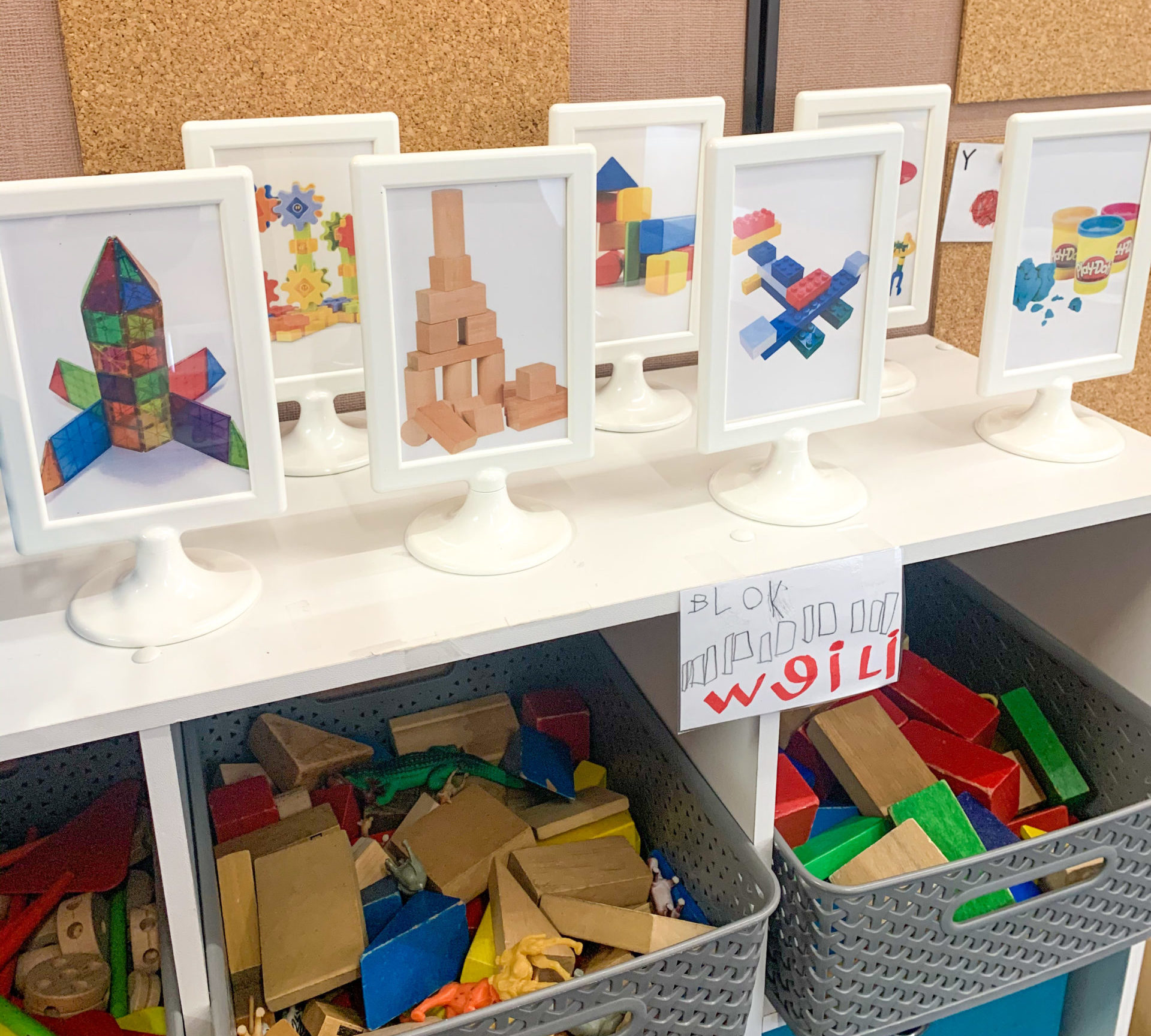
In the morning, I would set these frames out in places around the room to give students plenty of space. Sometimes, a frame would go to the same spot each day for ease of use (the blocks always stayed near the block bin because it was heavy). Other times, I moved the frames near a certain student’s learning spot so they could find it easily.
Who Plays, When Do They Play, For How Long?
This part of organizing your play centers depends on the size of your class and the flexibility of your daily schedule. Depending on how many centers and materials are available, you could have two or three students at each one. I prefer this number because it allows students to have a chance to take the lead in their play. A smaller group or pair also allows students to grow in their socialization skills by allowing them to practice taking turns, responding to questions, asking questions, and receiving/giving feedback.
I will display student names on the board alongside the picture in the corresponding frame to guide them to a center for the day. We switch daily! I just move the names down to the next picture. After a while, though, I remove names and put a number. This shows students how many can play in that center. Eventually, students don’t need this prompt at all once they’re remembered how many can play in each space.
Play centers have worked well for me in the morning as soon as students arrive. Other teachers have done it at the very end of the day, and that may work well, too. I prefer mornings for a few reasons: a soft start to the day, a fun way to start the day, a buffer for late students, a chance to soothe students who have a hard time saying goodbye, time to take attendance, lunch count, or tend to other morning tasks, and the ability to walk around and observe students in their element. I never felt comfortable with quiet morning work as soon as my students came into the classroom. It felt as though I was immediately taking their choice away and dictating how their day would begin. With play centers, students can come into the classroom, unpack, and immediately start making choices.
Our schedule has allowed me to have play centers from anywhere between 15 and 30 minutes. Even when the time was shorter, students still engaged in meaningful play. If we have indoor recess, I don’t worry about planning an activity. We just go to play centers!
Want to learn more?
Head over to my Instagram account where I share frequently about play centers. I have a highlight dedicated to stories about play in our classroom and answers to some frequently asked questions. Like my name suggests, I’m passionate about two things: research and play. You’ll see much more of that shared on my Instagram account!


